Analysis of Different Strategies for Lowering the Operation Temperature in Existing District Heating Networks
Abstract
:1. Introduction
2. Methodology
2.1. Simulation Model
2.1.1. Final Users
2.1.2. District Heating Network
2.2. Case Studies
2.2.1. Case 0: Current Conditions
2.2.2. Case 1: Continuous Operation Without Night Set-Back Control
2.2.3. Case 2: Energy Efficiency Intervention in Buildings
2.3. Additional Analyses
2.3.1. Sensitivity Analysis for Supply Temperature
2.3.2. Distributed Heat Pumps
3. Results
3.1. Simulation Results
3.2. Effect of the Supply Temperature
3.3. Alternative Layout: Distributed Heat Pumps
4. Discussion
Policy Indications
5. Conclusions and Future Work
- A continuous operation of the buildings’ heating systems (Case 1) allows decreasing the network temperature without compromising the comfort until 50–60 C, even without any action on building insulation or heating system configuration. Such a management logic is able to provide comfort levels that are comparable to traditional high-temperature operation of the network. However, temperatures below 50 C do not guarantee an acceptable comfort level. On the other hand, the users energy consumption increases due to the continuous operation of the heating system by 3.5% with respect to the reference case, although the network losses are decreased.
- The results from Case 2 (buildings’ insulation) confirm the great benefits of energy efficiency interventions in buildings. The energy consumption is much lower with respect to the other cases, the fluctuations of the indoor temperature are smaller, and day and night operation could be used instead of continuous operation. However, unlike the previous case, the network temperature must be at least 60 C to guarantee an acceptable comfort level under the hypotheses of this study. The cause is the lower temperature difference between the heating system’s water and the indoor temperature, which makes the morning transient longer with respect to the reference case.
- The combination of heat pumps and district heating systems seems to have a noteworthy potential, although some parameters are critical for their success. In fact, booster HPs can lower the energy demand from the DH network (and the supply temperature as well) but at the expense of a non-negligible local electricity consumption. Their environmental benefit is therefore strictly dependent on the source of these electricity, with reference to its renewable share and emission factor. HPs are very efficient devices, if well designed, but they are more expensive and fragile than simple heat exchangers. Nevertheless, the simulation highlights the potential advantages of this combination that have to be evaluated through a detailed business and management plan.
Future Developments
Author Contributions
Funding
Conflicts of Interest
Abbreviations
| CHP | Combined Heat and Power |
| COP | Coefficient Of Performance |
| DH | District Heating |
| HP | Heat Pump |
| PEC | Primary Energy Consumption |
| PI | Proportional Integral |
| RES | Renewable Energy Sources |
| TMY | Typical Meteorological Year |
| WHR | Waste Heat Recovery |
| A | area (m) |
| CF | comfort factor (-) |
| COP | Coefficient Of Performance (-) |
| d | diameter (m) |
| empirical correction factor (-) | |
| fraction of radiant heat (-) | |
| comfort factor (-) | |
| mass flow rate (kg/s) | |
| pressure difference (Pa) | |
| thermal power (W) | |
| T | temperature (K) |
| U | transmittance (W/(mK)) |
| V | volume (m) |
| volume flow rate (m) | |
| v | velocity (m/s) |
| W | power (W) |
| density (kg/m) | |
| efficiency (-) |
References
- Lund, H.; Werner, S.; Wiltshire, R.; Svendsen, S.; Thorsen, J.E.; Hvelplund, F.; Mathiesen, B.V. 4th Generation District Heating (4GDH): Integrating smart thermal grids into future sustainable energy systems. Energy 2014, 68, 1–11. [Google Scholar] [CrossRef]
- Reiter, P.; Poier, H.; Holter, C. BIG Solar Graz: Solar District Heating in Graz—500,000 m2 for 20% Solar Fraction. Energy Procedia 2016, 91, 578–584. [Google Scholar] [CrossRef]
- Wahlroos, M.; Pärssinen, M.; Manner, J.; Syri, S. Utilizing data center waste heat in district heating—Impacts on energy efficiency and prospects for low-temperature district heating networks. Energy 2017, 140, 1228–1238. [Google Scholar] [CrossRef]
- Helin, K.; Zakeri, B.; Syri, S. Is District Heating Combined Heat and Power at Risk in the Nordic Area?—An Electricity Market Perspective. Energies 2018, 11, 1256. [Google Scholar] [CrossRef]
- Schmidt, D.; Kallert, A.; Blesl, M.; Svendsen, S.; Li, H.; Nord, N.; Sipilä, K. Low Temperature District Heating for Future Energy Systems. Energy Procedia 2017, 116, 26–38. [Google Scholar] [CrossRef] [Green Version]
- Yang, X.; Svendsen, S. Ultra-low temperature district heating system with central heat pump and local boosters for low-heat-density area: Analyses on a real case in Denmark. Energy 2018, 159, 243–251. [Google Scholar] [CrossRef]
- Vetterli, N.; Sulzer, M.; Menti, U.P. Energy monitoring of a low temperature heating and cooling district network. Energy Procedia 2017, 122, 62–67. [Google Scholar] [CrossRef]
- Nord, N.; Løve Nielsen, E.K.; Kauko, H.; Tereshchenko, T. Challenges and potentials for low-temperature district heating implementation in Norway. Energy 2018, 151, 889–902. [Google Scholar] [CrossRef]
- Nielsen, S.; Grundahl, L. District Heating Expansion Potential with Low-Temperature and End-Use Heat Savings. Energies 2018, 11, 277. [Google Scholar] [CrossRef]
- Østergaard, D.S.; Svendsen, S. Experience from a practical test of low-temperature district heating for space heating in five Danish single-family houses from the 1930s. Energy 2018, 159, 569–578. [Google Scholar] [CrossRef]
- Schweiger, G.; Larsson, P.O.; Magnusson, F.; Lauenburg, P.; Velut, S. District heating and cooling systems—Framework for Modelica-based simulation and dynamic optimization. Energy 2017, 137, 566–578. [Google Scholar] [CrossRef]
- Ogunsola, O.T.; Song, L.; Wang, G. Development and validation of a time-series model for real-time thermal load estimation. Energy Build. 2014, 76, 440–449. [Google Scholar] [CrossRef]
- Idowu, S.; Saguna, S.; Åhlund, C.; Schelén, O. Applied machine learning: Forecasting heat load in district heating system. Energy Build. 2016, 133, 478–488. [Google Scholar] [CrossRef]
- DassaultSystem. Dymola. Available online: https://www.3ds.com/products-services/catia/products/dymola/ (accessed on 1 September 2018).
- IEA. New Generation Computational Tools for Building and Community Energy Systems; International Energy Agency: Paris, France, 2017; p. 60. [Google Scholar]
- Lawrence Berkeley National Laboratory. Buildings Library. Available online: http://simulationresearch.lbl.gov/modelica/ (accessed on 1 September 2018).
- Wetter, M. Fan and pump model that has a unique solution for any pressure boundary condition and control signal. In Proceedings of the 13th Conference of International Building Performance Simulation Association, Chambery, France, 26–28 August 2013; pp. 3505–3512. [Google Scholar]
- EnergyPlus. Weather Data. Available online: http://energyplus.net/weather (accessed on 15 September 2018).
- Legislatura. Decreto Del Presidente Della Repubblica 26 Agosto 1993, n. 412. Available online: http://www.gazzettaufficiale.it/eli/id/1993/10/14/093G0451/sg (accessed on 30 September 2018).
- Verda, V.; Colella, F. Primary energy savings through thermal storage in district heating networks. Energy 2011, 36, 4278–4286. [Google Scholar] [CrossRef]
- Gadd, H.; Werner, S. Daily heat load variations in Swedish district heating systems. Appl. Energy 2013, 106, 47–55. [Google Scholar] [CrossRef] [Green Version]
- Noussan, M.; Roberto, R.; Nastasi, B. Performance indicators of electricity generation at country level— The case of Italy. Energies 2018, 11, 650. [Google Scholar] [CrossRef]
- Weissmann, C.; Hong, T.; Graubner, C.A. Analysis of heating load diversity in German residential districts and implications for the application in district heating systems. Energy Build. 2017, 139, 302–313. [Google Scholar] [CrossRef] [Green Version]
- Dahl, M.; Brun, A.; Kirsebom, O.S.; Andresen, G.B. Improving Short-Term Heat Load Forecasts with Calendar and Holiday Data. Energies 2018, 11, 1678. [Google Scholar] [CrossRef]
- Noussan, M.; Jarre, M.; Poggio, A. Real operation data analysis on district heating load patterns. Energy 2017, 129, 70–78. [Google Scholar] [CrossRef]
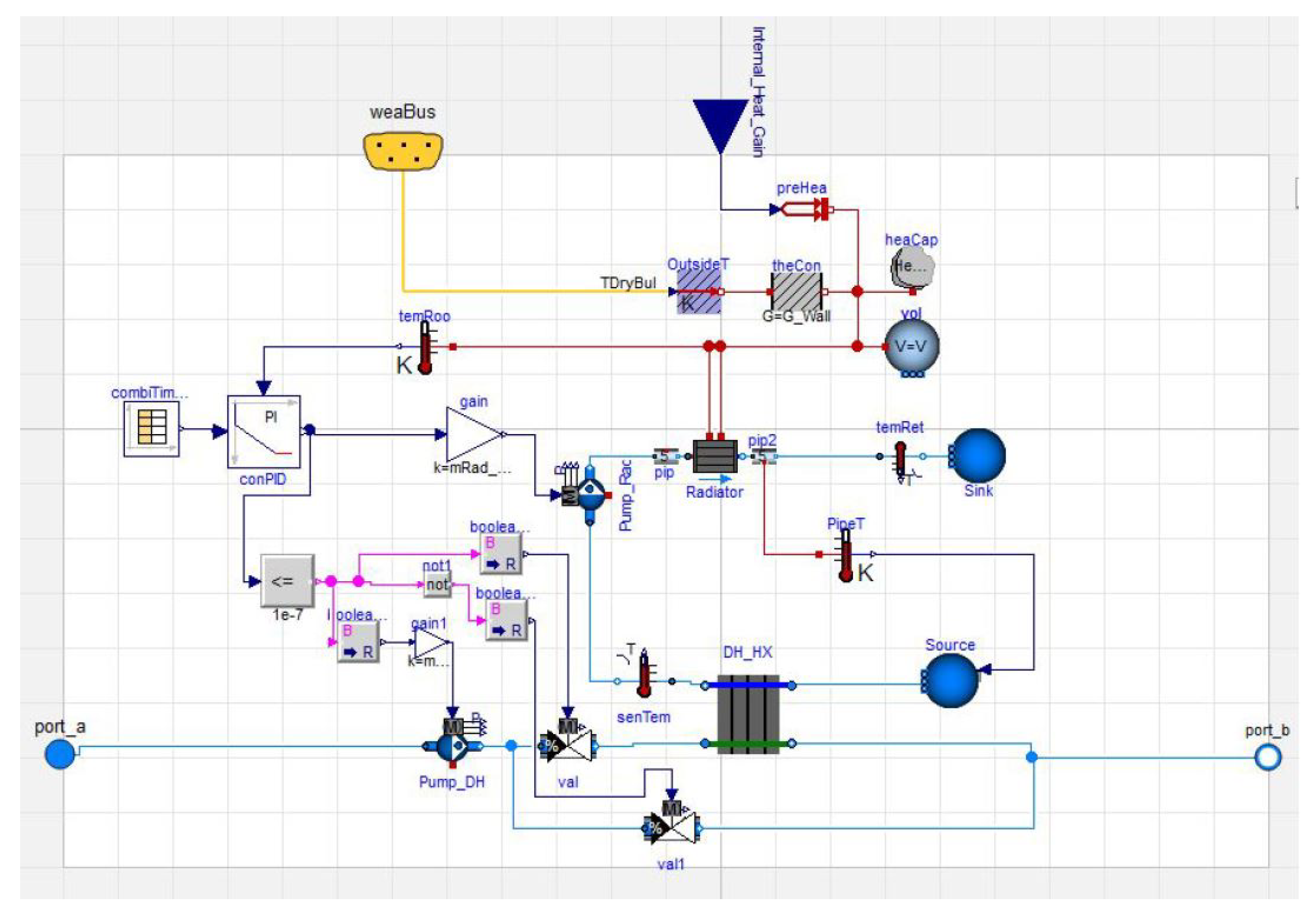
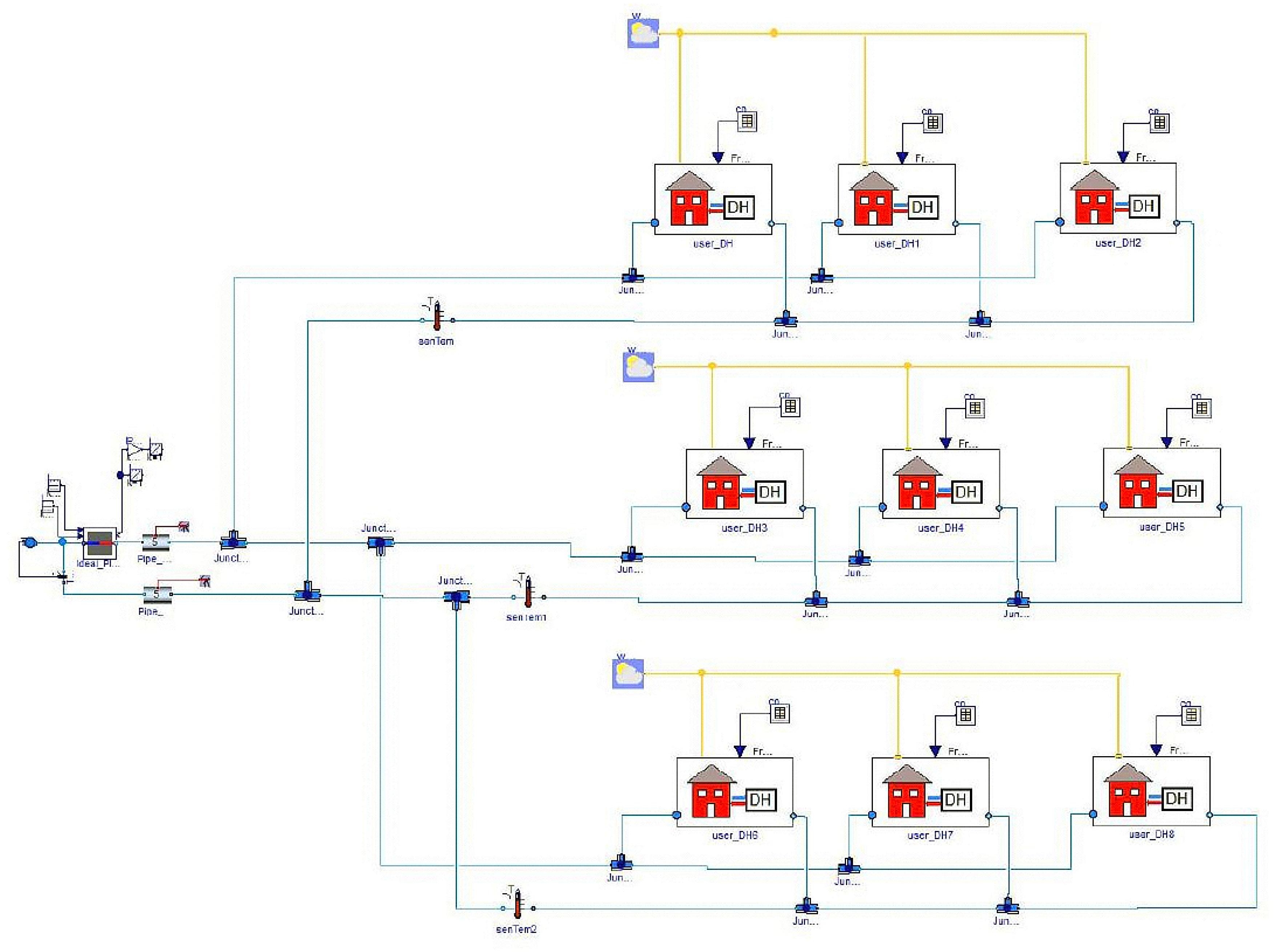
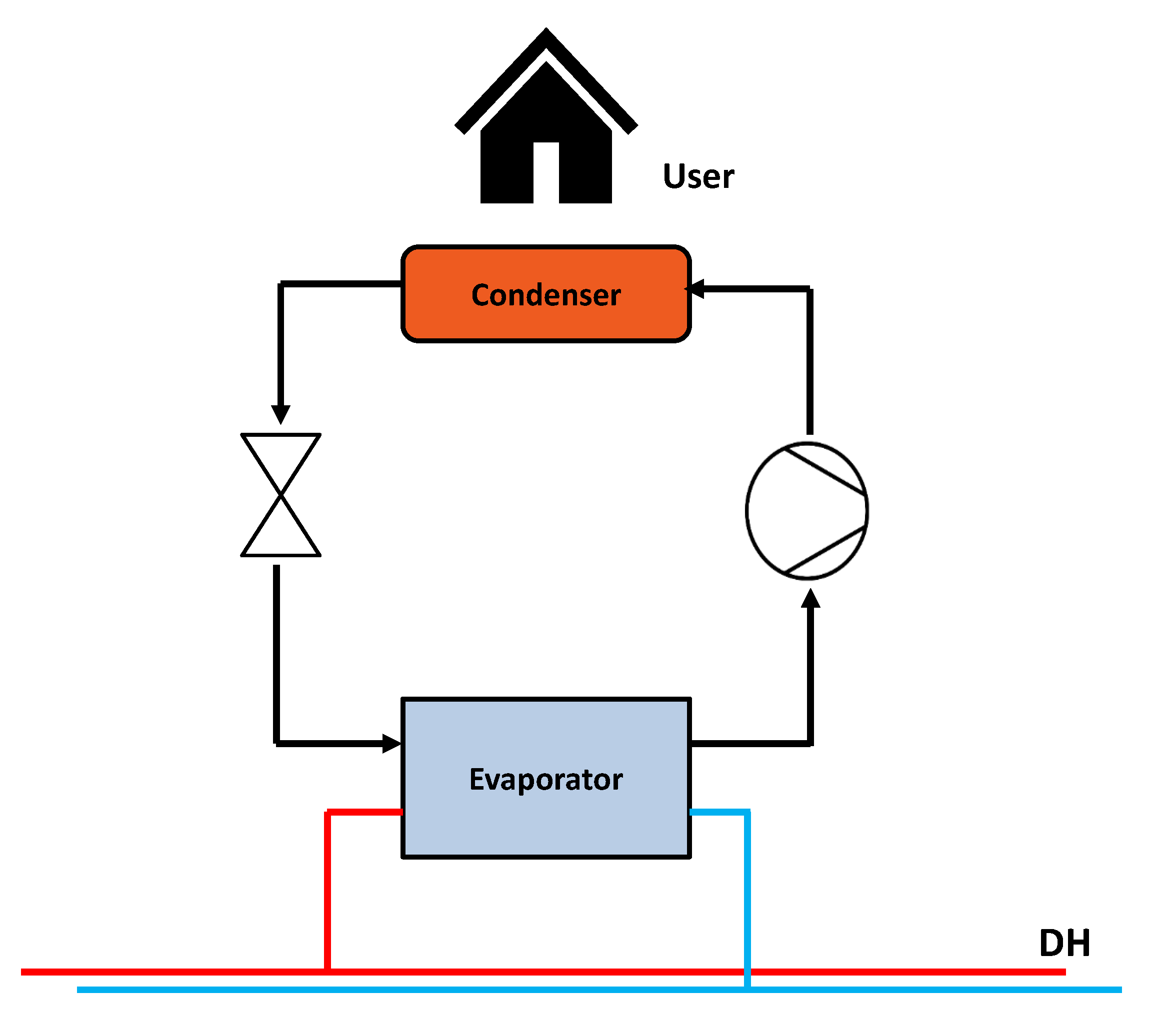
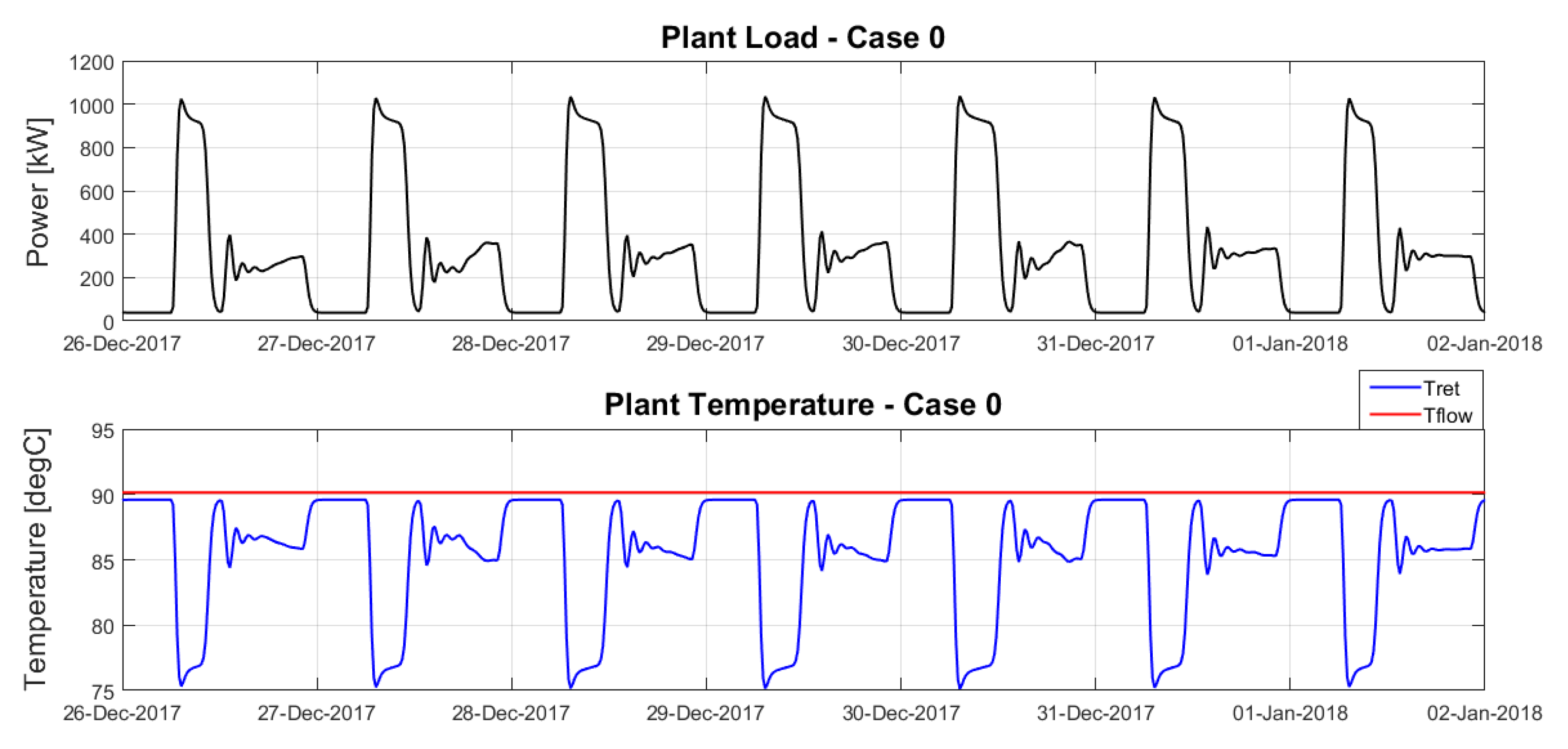
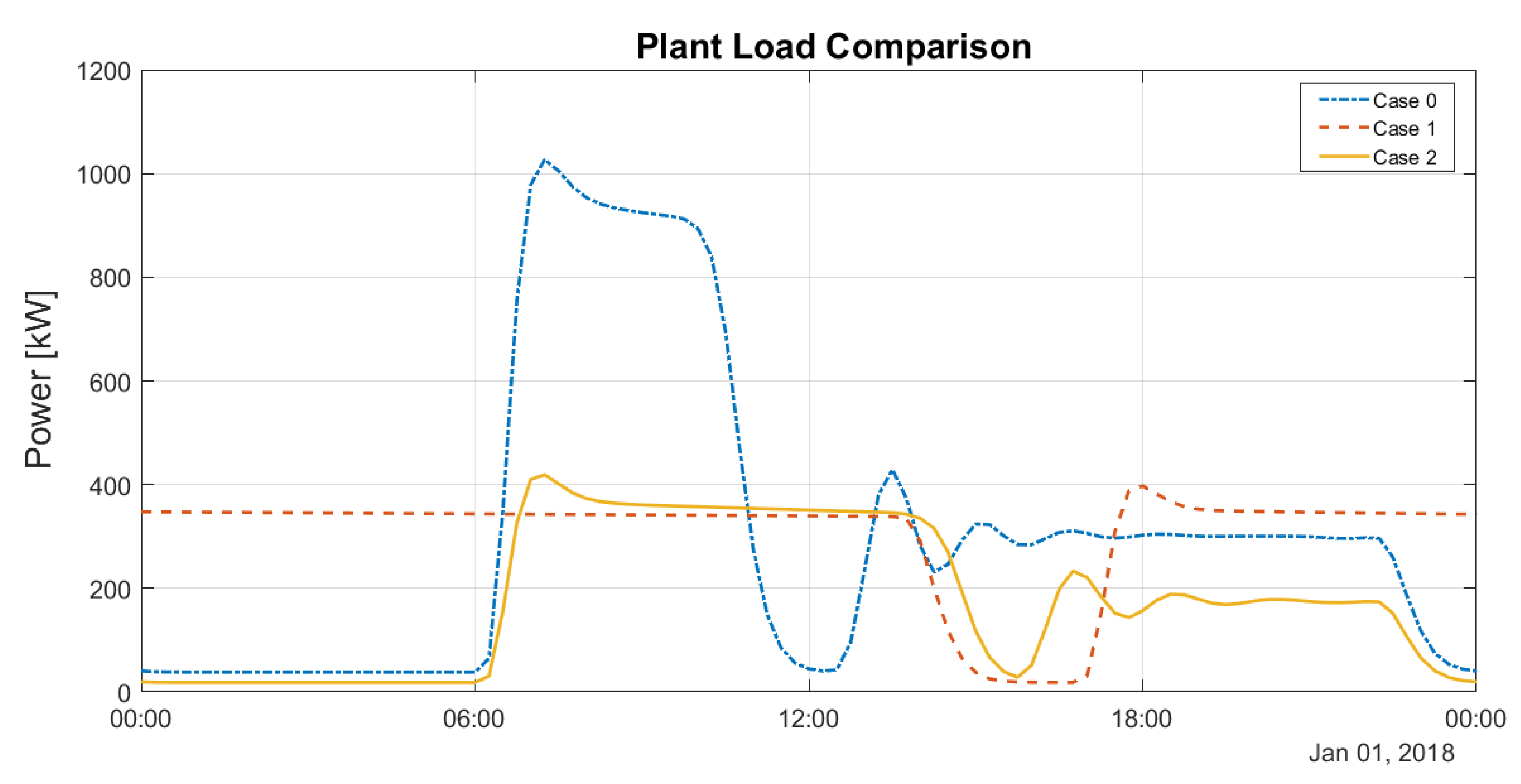
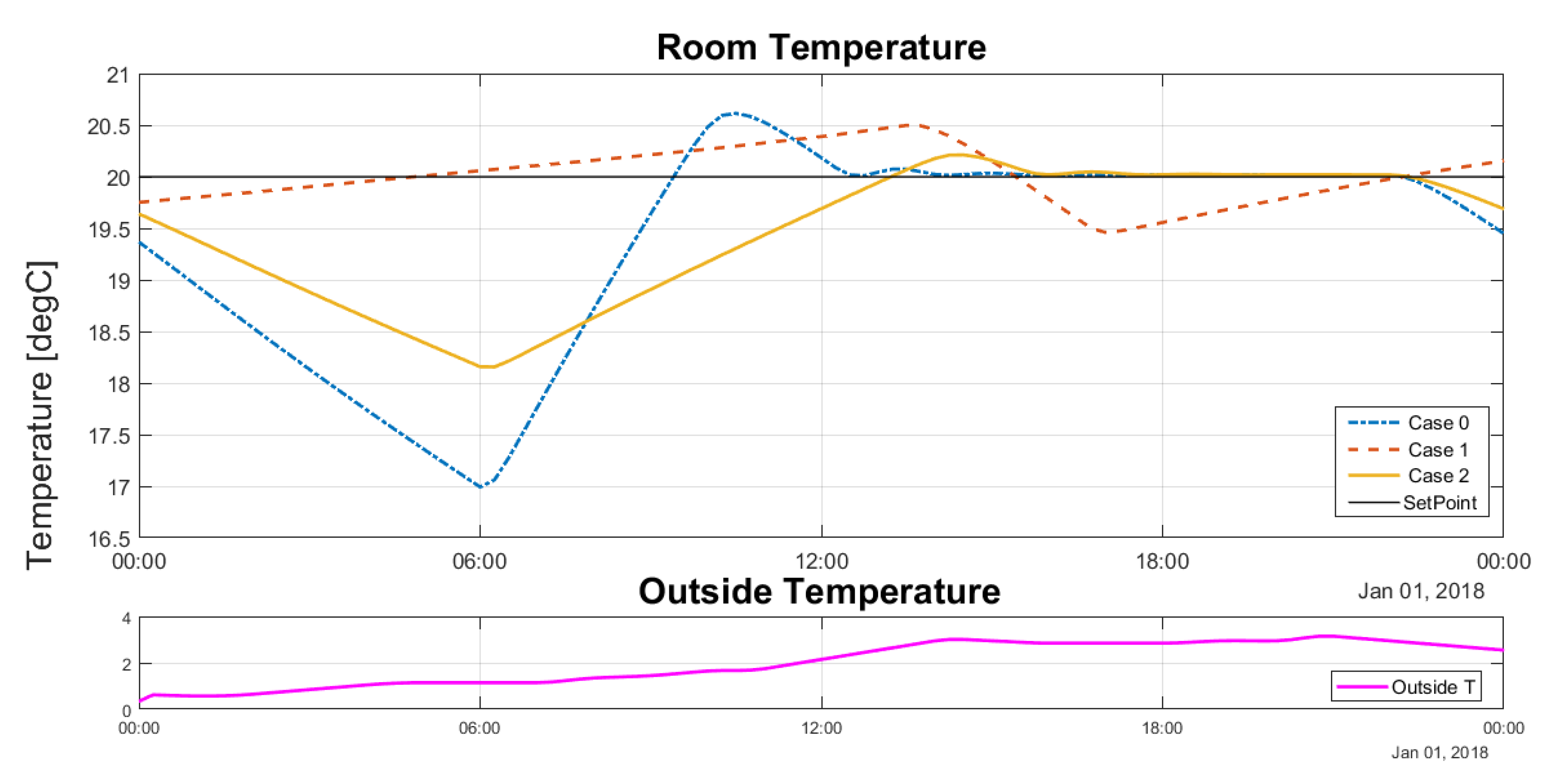
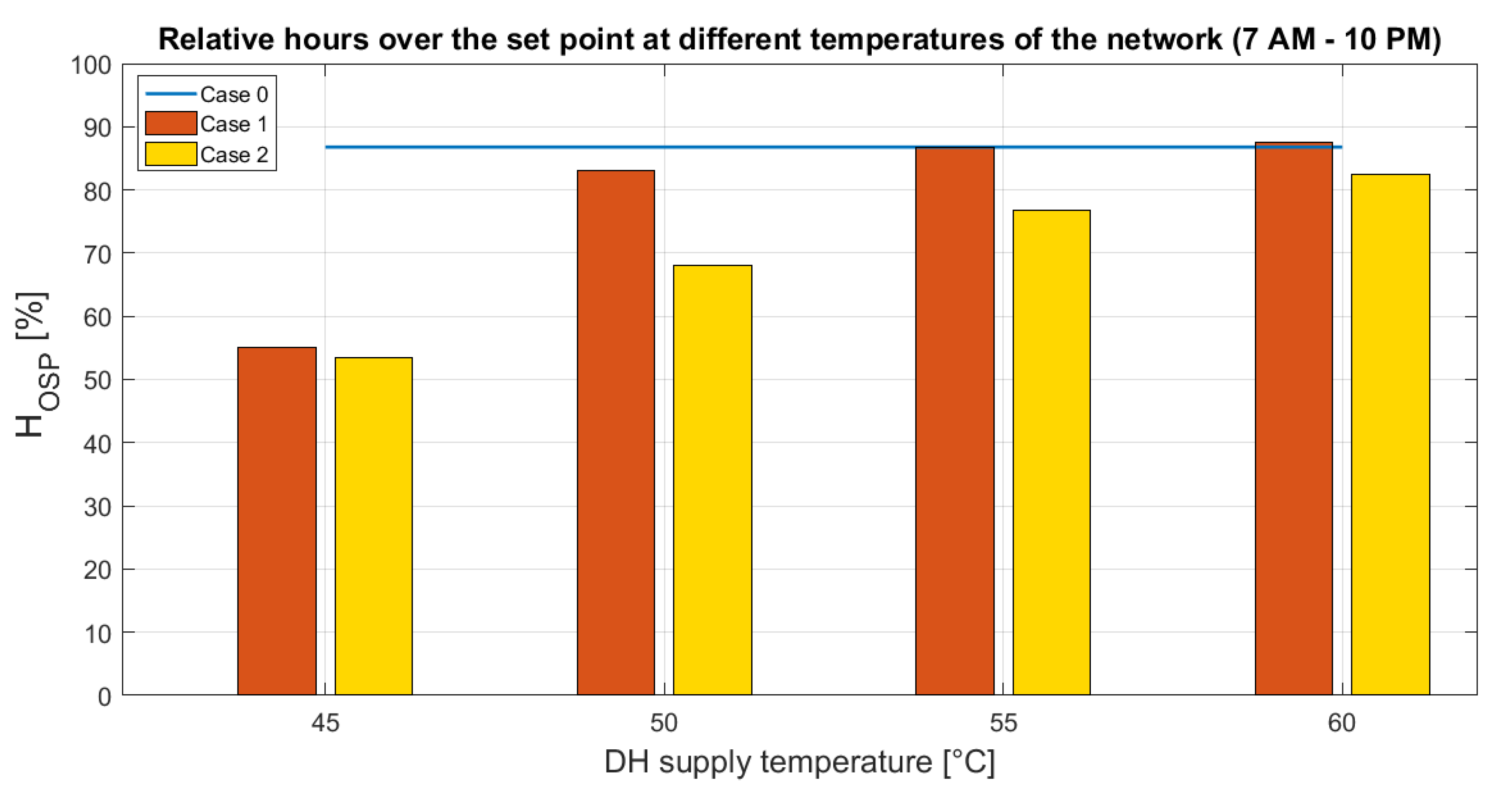
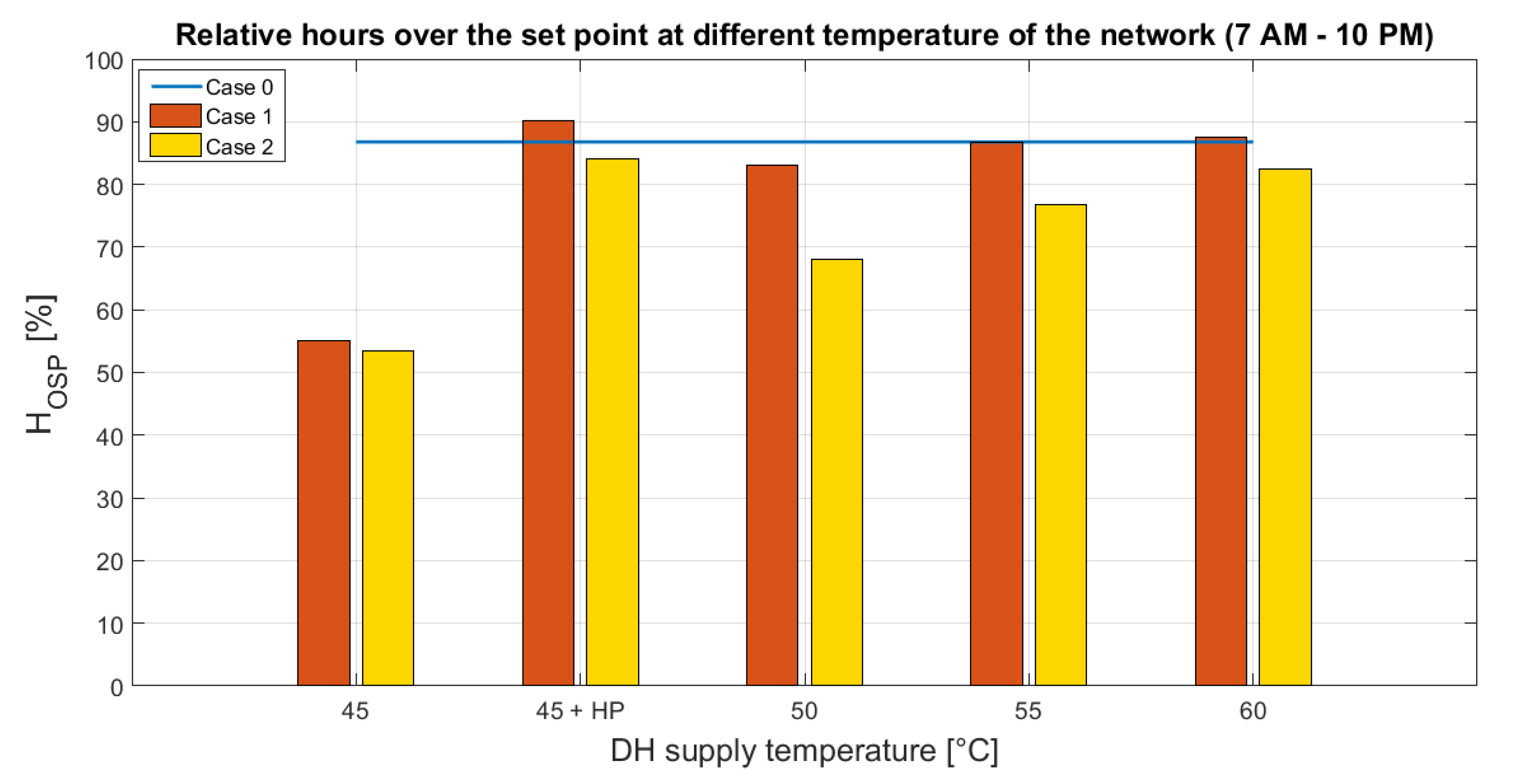
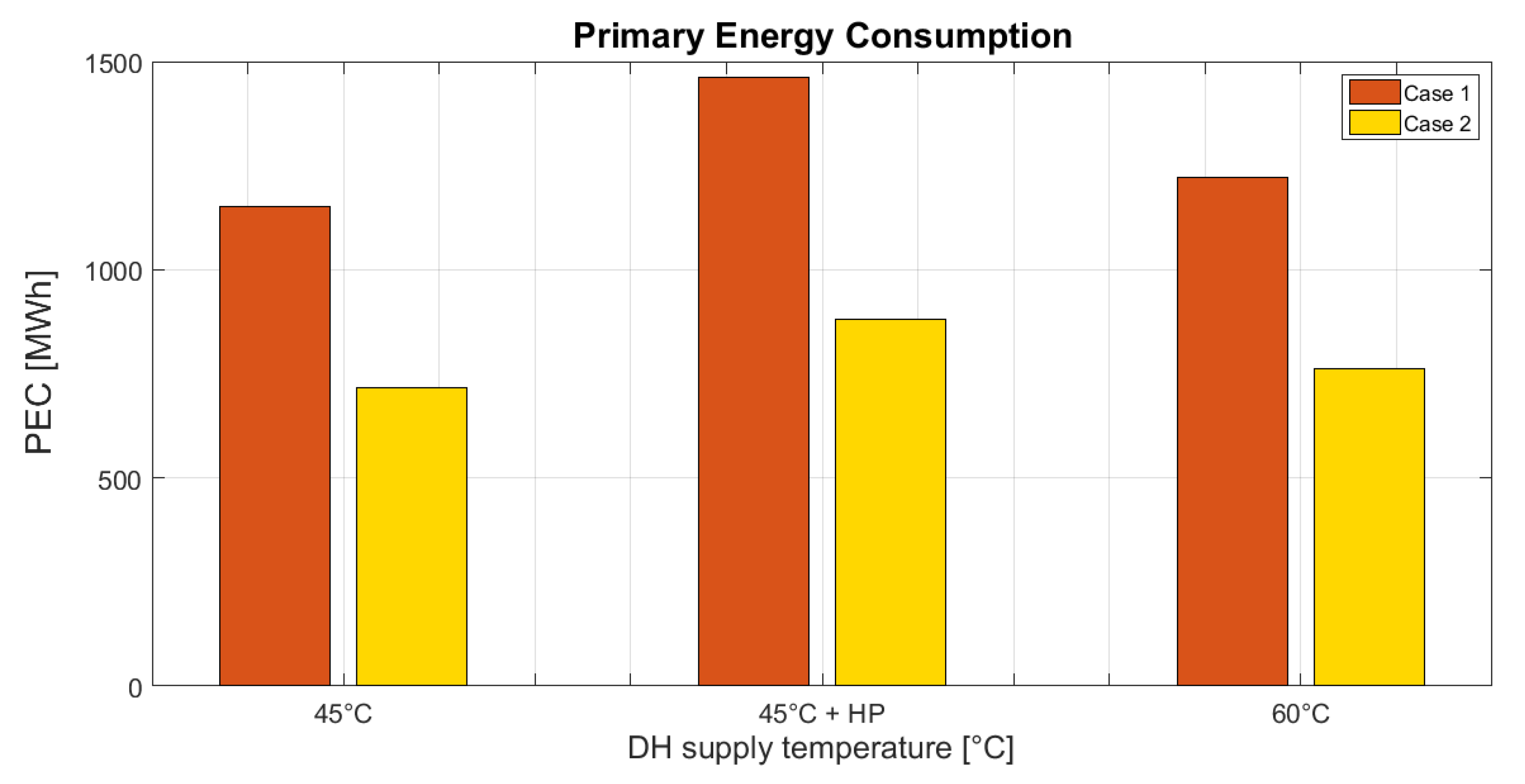
| Case | User Demand (MWh) | DH Supply (MWh) | Network Losses (-) |
|---|---|---|---|
| Case 0 | 910 | 1075 | 18.0% |
| Case 1 | 941 | 1019 | 8.3% |
| Case 2 | 548 | 628 | 14.5% |
© 2019 by the authors. Licensee MDPI, Basel, Switzerland. This article is an open access article distributed under the terms and conditions of the Creative Commons Attribution (CC BY) license (http://creativecommons.org/licenses/by/4.0/).
Share and Cite
Neirotti, F.; Noussan, M.; Riverso, S.; Manganini, G. Analysis of Different Strategies for Lowering the Operation Temperature in Existing District Heating Networks. Energies 2019, 12, 321. https://doi.org/10.3390/en12020321
Neirotti F, Noussan M, Riverso S, Manganini G. Analysis of Different Strategies for Lowering the Operation Temperature in Existing District Heating Networks. Energies. 2019; 12(2):321. https://doi.org/10.3390/en12020321
Chicago/Turabian StyleNeirotti, Francesco, Michel Noussan, Stefano Riverso, and Giorgio Manganini. 2019. "Analysis of Different Strategies for Lowering the Operation Temperature in Existing District Heating Networks" Energies 12, no. 2: 321. https://doi.org/10.3390/en12020321
APA StyleNeirotti, F., Noussan, M., Riverso, S., & Manganini, G. (2019). Analysis of Different Strategies for Lowering the Operation Temperature in Existing District Heating Networks. Energies, 12(2), 321. https://doi.org/10.3390/en12020321







